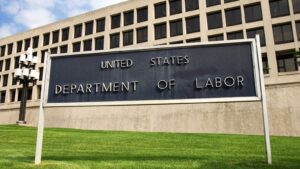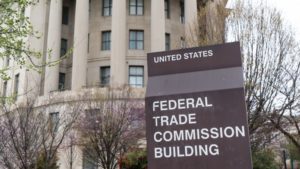Share
New year, new regulations—commonplace for businesses and HR departments. Two new labor rules of interest to HR professionals are set to take effect in the early months of 2024.
- First, the National Labor Relations Board’s most recent standards for determining joint employers are set to go into effect on February 26, 2024.
**UPDATE**- Judge J. Campbell Barker of the U.S. District Court for the Eastern District of Texas vacated the National Labor Relations Board’s joint employer rule late Friday. The rule was set to go into effect Monday, March 11, 2024.
- Second, the Department of Labor’s latest update to the independent contractor rule is slated to go into effect March 11, 2024.
NLRB Joint Employer Rule
In October 2023, the National Labor Relations Board issued its most recent standard for determining when two (or more) entities are considered “joint employers” under the National Labor Relations Act.
On the whole, the new rule lowers the bar to establish joint employer status. Now, two (or more) entities may be considered joint employers if each entity shares or codetermines one or more of the employees’ essential terms and conditions of employment. These are defined as:
- Wages, benefits, and other compensation
- Hours of work and scheduling
- The assignment of duties to be performed
- The supervision of the performance of duties
- Work rules and directions governing the manner, means, and methods of the performance of duties and the grounds for discipline
- The tenure of employment, including hiring and discharge
- Working conditions related to the safety and health of employees
The 2023 Rule supplants the Board’s previous joint employer rule issued in 2020 and expands the landscape where joint employer status can be established. After the required review period, the new will take effect on February 26, 2024.
Employers should immediately take steps to review and, if needed, update contracts with third-party vendors or staffing agencies. If employers take action early enough, they can avoid unknowingly engaging in unfair labor practices as well as the resulting consequences.
DOL Independent Contractor Rule
In early January 2024, the U.S. Department of Labor announced its final rule revising its interpretation of the Fair Labor Standards Act’s classification provision to more clearly determine whether a worker may be considered an independent contractor.
Contractors & Exempt Employees: How Worker Classifications Impact Payroll and Taxes
The final rule mostly follows the agency’s initial proposal revealed back in October 2023—retaining the multifactor, “totality-of-the-circumstances” framework for analyzing independent contractors’ status included in that proposal.
Under this framework, DOL will consider six non-exhaustive factors when examining the relationship between a worker and a potential employer:
- Worker’s opportunity for profit or loss
- Investments made by the worker and the employer
- Degree of permanence of the work relationship
- Nature and degree of control over performance of the work
- Extent to which the work performed is an integral part of the employer’s business
- Use of the worker’s skill and initiative
The DOL said the final rule would ensure a level playing field for workers, particularly vulnerable workers who are misclassified and lose out on minimum wage, overtime pay, and other protections under the FLSA.
This new rule effectively rescinds the Trump administration’s 2021 independent contractor final rule. Additionally, the final rule does not adopt an “ABC” test, a framework that jurisdictions including California have adopted in order to determine independent contractor status.
Read more about recent HR rules, policies, and legislation:
- DOL Proposes New Overtime Rules: What to Know and How to Prepare
- What Employers Should Know About the Form I-9 Update
- Biden Administration Seeks to End Moral Opt-Out of Contraceptive Mandate
- Federal Trade Commission Proposes Ban on Non-Compete Agreements
Discover how Netchex can help your company stay in compliance and improve your HR processes:
Industry news & tips sent straight to your inbox!
Enter your email below to subscribe to industry news, product updates, and tips.
Related articles

HR Rules + Legislation Updates: Overtime, Non-Compete, Joint Employer, and More

DOL Proposes New Overtime Rules: What to Know and How to Prepare

What Employers Should Know About the Form I-9 Update

